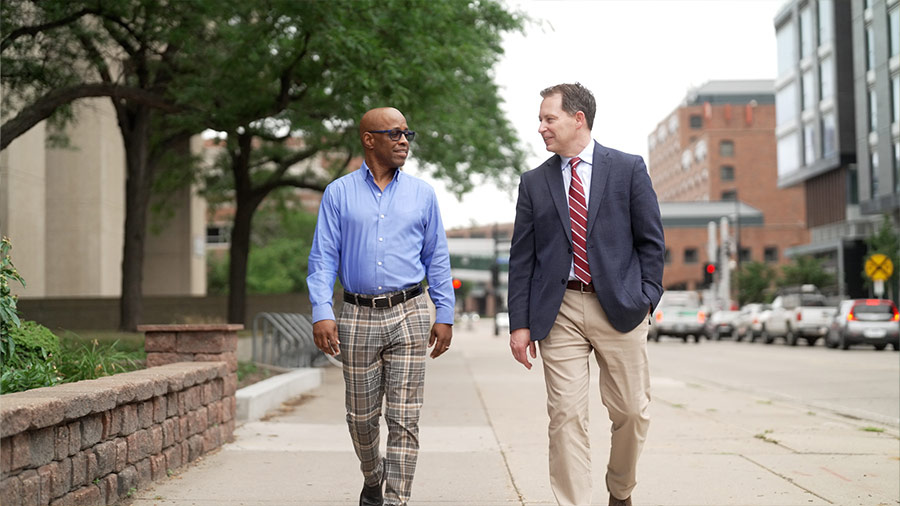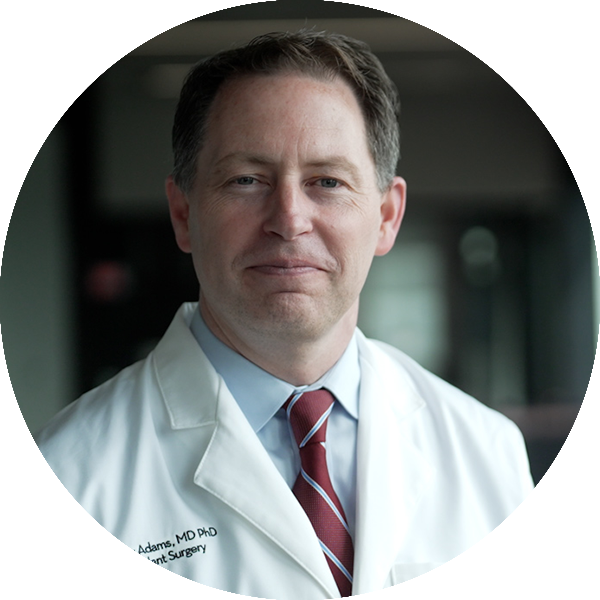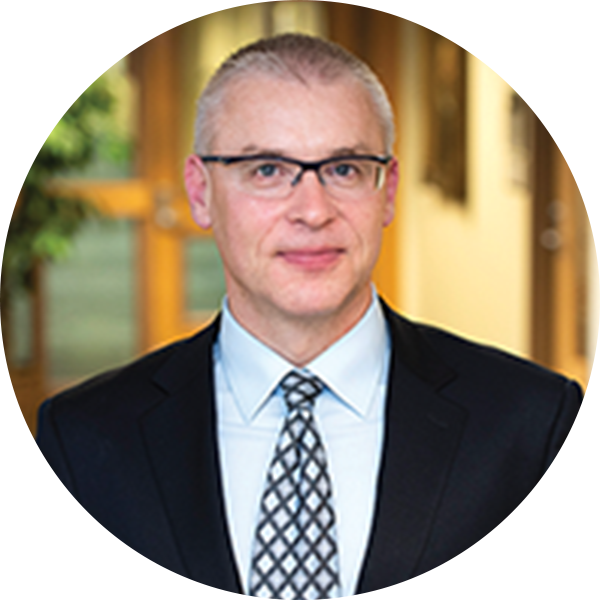The Transplant Patient who got Two Second Chances
George Surratt felt like the luckiest man in the world when he got a liver transplant.
The wait list for an organ is so long that some patients run out of time.
And, so, nine years later, when the Maplewood engineer turned again to University of Minnesota doctors, this time for a kidney transplant, he was worried.
Could lightning strike twice and allow him to join his wife Lorna in watching their two kids grow into careers and maybe even families?
It did, and now George, 56, Platform Quality Director of the Medical Solutions Division at 3M, is the most thankful man in the world, too.
“Someone was gracious enough to gift me with one of their kidneys,” he says. “That still blows my mind. I don’t know who it was yet. But I hope to find out.”
Adds Dr. Andrew Adams, the U of M professor, researcher and surgeon (M Health Fairview, University of Minnesota Physicians) who performed the transplant: “George is not only a model patient. He’s a powerful advocate for the work we do” – and still need to do.

A rich legacy at the U of M
Organ transplants have come a long way since the late ‘60s, when Dr. John Najarian started building the U of M’s program into a international leader.
The late surgeon advanced the science by tackling some of the most difficult cases at the time, the youngest patient, for instance, the oldest and the most fragile, some with diseases like diabetes.
Since then, transplants, as wondrous as each and every one still is, have become routine, with more than 13,000 done at the U of M alone.
“The ability to replace an organ that’s failing in somebody is one of modern medicine’s miracles,” Dr. Adams says. “It still excites and surprises me how we’ve made it so easy.”
The promise of new medicines
Still, as common as it is, there are challenges to transplantation, including overcoming our own body’s immune system, which attacks the new organ as an invader.
Immune suppressant drugs help, but they can go too far, allowing our body’s real enemies—like cancer--to go unchallenged.
Dr. Adams team, which has already developed a more targeted drug, hopes to go even further – reeducating our disease-fighting cells to recognize and accept the transplant as one of their own.
He says: “Our hope is that, with newer medicines and fewer side effects, that a transplant can last a lifetime – and not shorten that life at all.”

One of the saddest times, as a physician, is not being able to find an organ in time
Another challenge facing transplant medicine, one that George admits tested his faith, is that there simply aren’t enough donor organs to go around.
While there is progress in this area, building awareness and creating programs, for instance, that encourage loved ones to donate to pools for a better chance at a match, Dr. Adams works on another possibility.
Advancements in our ability to edit DNA, that is, take out or add genes, are making animal organs a viable alternative, medicine called xenotransplantation.
“This used to be science fiction,” Dr. Adams says. “Now it’s looking like the future of transplantation. I’d say in the next three to five years we’ll see clinical trials.”
There’s a reason I want to still be here
George is a biking fanatic. He had hoped to one day complete a Century Ride – 100 miles in one day.
But, then, ulcerative colitis took him down the road to that liver transplant.
Some nine years later, the anti-rejection drugs he was taking damaged his kidneys and led to the need for that second lightning strike.
George, who has since climbed back on his bike and been able to pedal as far as three miles, is uncertain he’ll ever make that big ride.
But, when it comes to passing on his good fortune, he’s all in:
“I got lucky twice. I want to make the most of this. I want to be an advocate. I want people to realize that, as donors, they, too, can be a hero for someone like me.”
HOW YOU CAN HELP A PATIENT IN NEED
1. Check the donor box on your ID or sign up here
2. Register to be a living donor here
PUTTING DISCOVERY INTO PRACTICE
M Physicians are an extension of the University of Minnesota Medical School. As Medical School faculty, they are always looking for new and better ways to treat patients, whether in the laboratory or the clinic. And through clinical trials, cutting-edge therapies are sometimes available to patients when the standard of care is no longer enough.
What is Academic Medicine?
Most medicine is practiced within what is called “the standard of care.” Simply put, “standard of care” is the treatment that is commonly accepted for treating illness. This is a good thing! It means that patients receive treatments that are known to be generally effective and reliable.
The goal of academic medicine is to treat patients while looking for better therapies. It takes the toughest problems from the clinic and looks for solutions in our research. Many of our physicians — leaders in their fields — are also scientists.
When a patient faces an illness that requires treatment that exceeds the standard of care, academic medicine can provide access to newer therapies.




